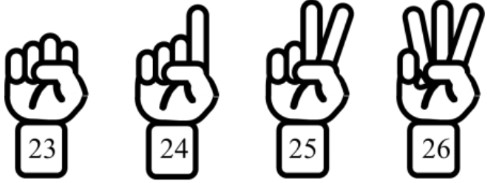Counting forwards
Topic Notes
In this lesson, we will learn:
- How do we count forwards using: the numbers 0 to 9, number lines (and negative numbers), and big numbers (up to millions)?
- Counting forwards can help us write addition statements.
Notes:
- We use numbers to represent how many things there are.
- You can count how many things there are by counting FORWARDS:
- 1, 2, 3, 4, 5, 6, 7, 8, 9, 10, …
- Technically, the number line starts at 0 but zero means there are no things to count. That’s why you start counting at 1
- Counting forwards means the counting numbers are getting BIGGER
- If you look at a number line, counting forwards means going from left to right

- Negative numbers also count forward by going from left to right on a number line
- Don’t get confused! The negative numbers (digits) are going backwards, but they have a negative sign!
- The smaller your negative, the bigger your value (less negative = bigger)
- Ex. counting forwards in negatives: -5, -4, -3, -2, -1, 0
- Recall: number PLACE VALUES!
- The smaller place values are on the right, the bigger place values are on the left
- When the digit increases (from 0 to 9): after you hit 9, next you will increase 1 into the place value on the left. Your digit will then start again from 0 (and count up to 9, repeating the process)
- You can also use your fingers to count forward and find out how many numbers you have increased (counted up) by.
- Put down all your fingers (zero fingers up) when you start on your first number.
- Each number you count, raise one more finger.
- When you reach your last number, you can count your raised fingers
- Ex. counting from 23 up to 26: you count up by three
- This can allow you to make addition statements!
- [starting #] + [how much you counted up] = [last #]
- Ex. counting from 23 up to 26, the addition statement would be: 23 + 3 = 26



